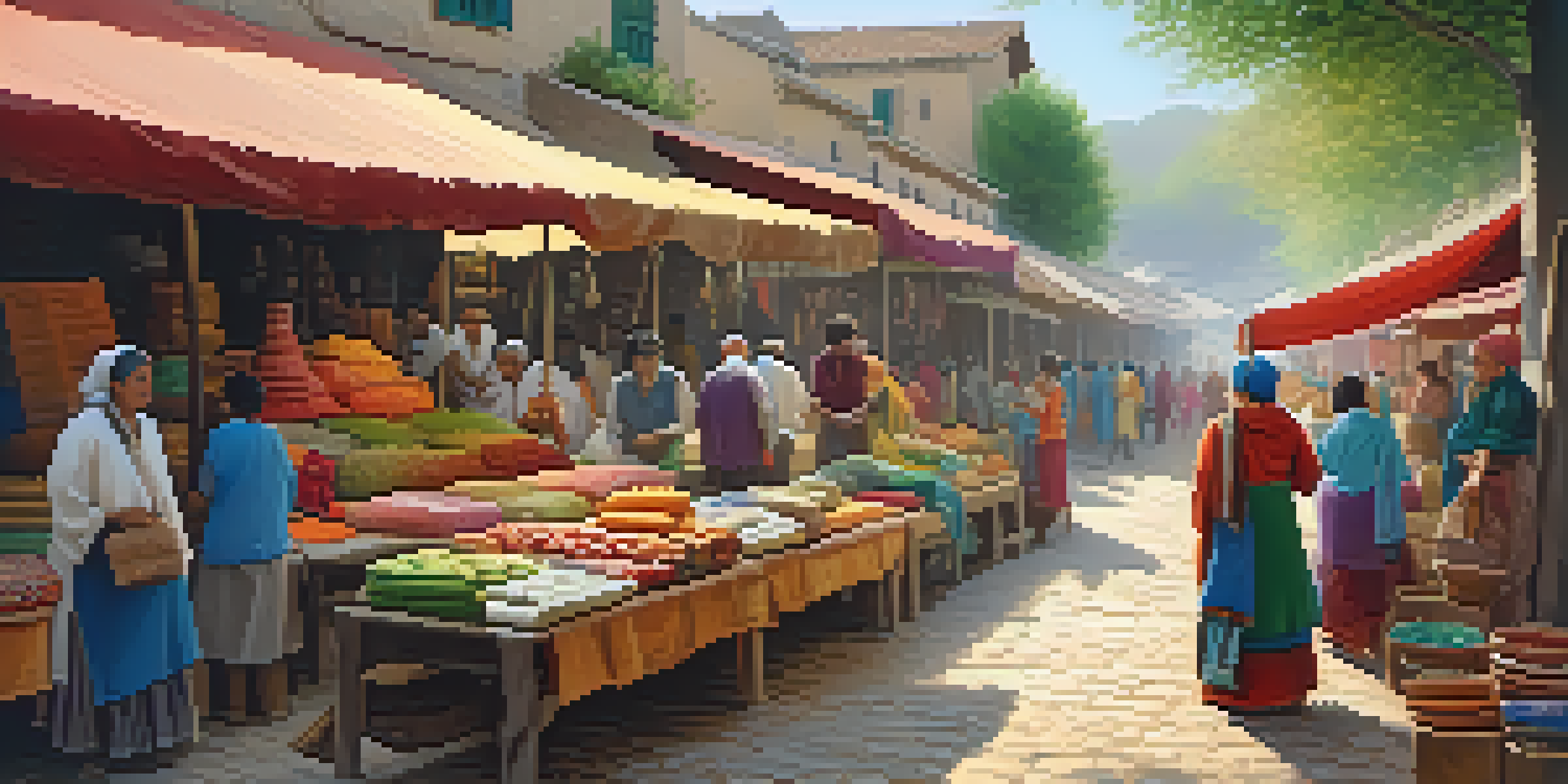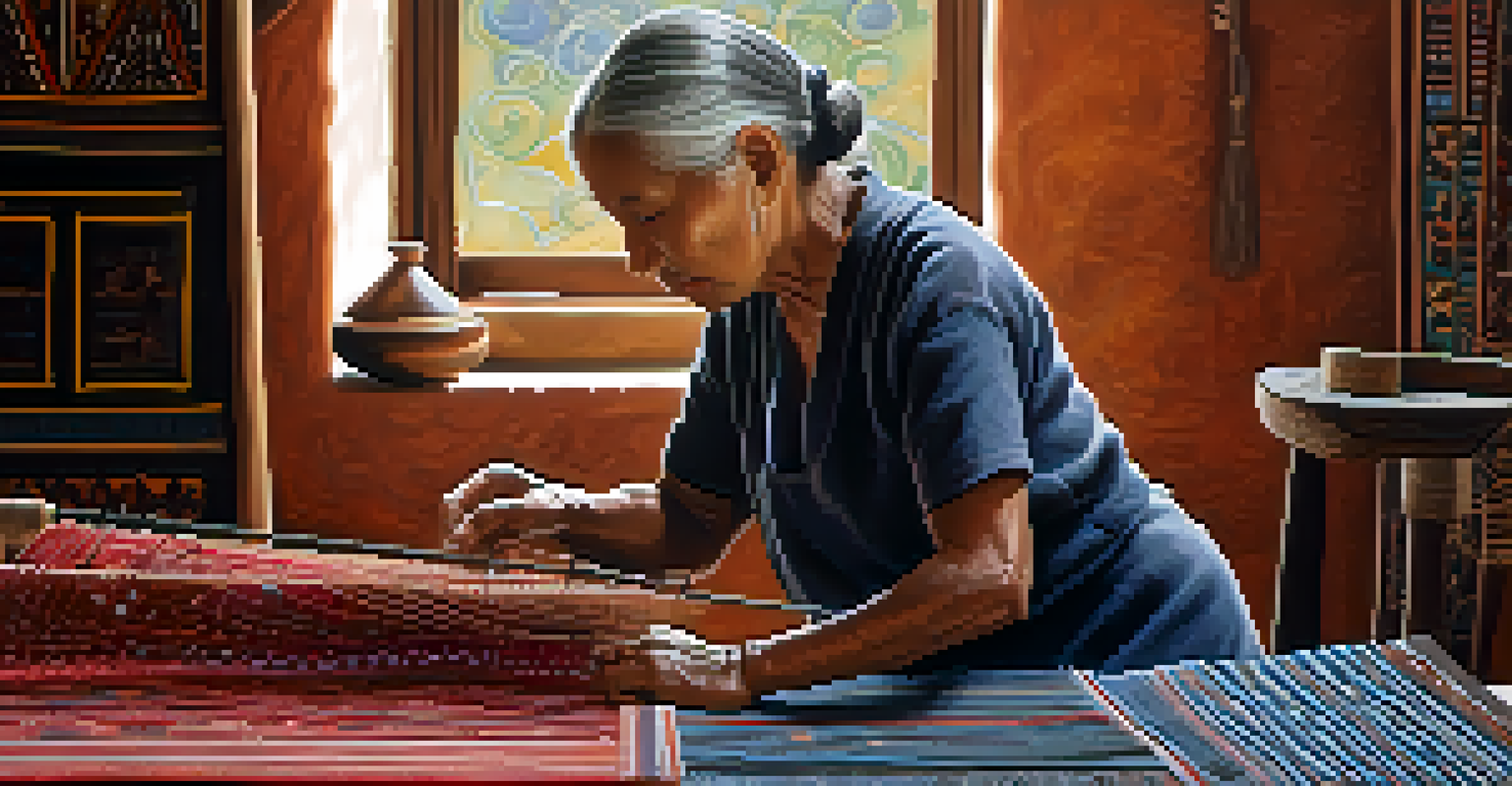The Role of Cultural Sensitivity in Travel Photography

What is Cultural Sensitivity in Travel Photography?
Cultural sensitivity in travel photography is about respecting and understanding the traditions, beliefs, and customs of the communities you are photographing. It means being aware of how your presence and lens can impact local cultures. This approach not only enriches your journey but also fosters positive interactions with the people you meet.
Traveling – it leaves you speechless, then turns you into a storyteller.
When you travel with cultural sensitivity, you are more likely to capture authentic moments that tell a story rather than reinforce stereotypes. This can lead to more meaningful and respectful representations of the culture you are documenting. Ultimately, it’s about connecting with people rather than just taking pictures.
By defining cultural sensitivity, we set the stage for how photographers can approach their craft thoughtfully. It encourages a mindset that values empathy and understanding, which is essential for capturing the essence of diverse cultures.
Why Cultural Sensitivity Matters in Photography
Cultural sensitivity matters in photography because it shapes the narrative of the images we create. When photographers approach their subjects with respect, they help preserve the dignity of the culture and its people. This creates a more nuanced understanding for viewers, countering the often one-dimensional portrayals seen in mainstream media.

Moreover, being culturally sensitive can prevent misunderstandings and conflicts. A respectful approach can foster trust between the photographer and the community, leading to richer engagement and more authentic photographs. When people feel valued, they are more likely to share their stories and traditions.
Respect Local Cultures in Photography
Cultural sensitivity in travel photography involves understanding and respecting the traditions and customs of the communities you are photographing.
Ultimately, cultural sensitivity is not just about avoiding offense; it’s about creating a dialogue. It allows for deeper connections and a more genuine exploration of the world, which is what travel photography is truly about.
Building Relationships with Local Communities
One of the most rewarding aspects of travel photography is the opportunity to build relationships with local communities. Before snapping a photo, take the time to engage with people and learn about their lives. This not only enriches your experience but often results in more compelling images that tell a story.
The camera is an instrument that teaches people how to see without a camera.
Approaching locals with curiosity and respect can lead to unexpected moments of connection. For example, asking for permission before taking a photo can open doors and create a sense of collaboration. Many people appreciate being included in the storytelling process and will share insights that enhance your understanding.
In building these relationships, you become an ambassador for both your own culture and the one you are visiting. This fosters mutual respect and can lead to lasting friendships, which can be a delightful bonus on your travel journey.
Navigating Cultural Norms and Taboos
Every culture has its own set of norms and taboos, and understanding these is crucial for a travel photographer. For instance, in some cultures, taking pictures of certain religious sites or practices may be frowned upon or outright prohibited. Doing your homework can save you from uncomfortable situations and ensure that you are acting respectfully.
Navigating these cultural norms requires an open mind and a willingness to learn. Observing local customs, such as dress codes or behavioral expectations, can help you blend in more seamlessly. This not only enhances your experience but also makes locals feel more comfortable around you.
Build Trust with Local Communities
Engaging with locals and seeking permission before taking photos fosters trust and leads to more authentic and compelling images.
When you respect cultural boundaries, you not only avoid offending anyone but also position yourself to capture more authentic moments. This approach shows that you value the culture and its practices, which can lead to deeper insights and richer photographs.
The Impact of Stereotypes in Travel Photography
Stereotypes can significantly affect how cultures are perceived through photography. Often, images that reinforce clichés can overshadow the true diversity and richness of a culture. By being culturally sensitive, photographers can challenge these stereotypes and present a more balanced view.
For example, instead of focusing solely on traditional attire or festivals, consider capturing everyday life and the complexities of the culture. This approach highlights the humanity of the people and their environments, moving beyond simplistic representations. It encourages viewers to see the culture as dynamic and multifaceted.
By consciously working to avoid stereotypes, photographers contribute to a more respectful and informed discourse about cultures around the world. This not only enhances the integrity of their work but also encourages others to see beyond the surface.
Ethical Considerations in Travel Photography
Ethical considerations are at the forefront of culturally sensitive travel photography. It’s important to think about how your images will be used and who will benefit from them. Photographers have a responsibility to represent their subjects fairly and accurately.
One way to uphold ethical standards is by obtaining consent, especially when photographing individuals or private ceremonies. This helps ensure that people feel comfortable and respected, and it allows them to maintain agency over their own representation. Ethical photography builds trust and strengthens relationships with communities.
Challenge Stereotypes Through Images
By avoiding stereotypes and capturing the complexities of everyday life, photographers can present a more nuanced and respectful view of cultures.
In addition, consider how your work can give back to the community. Whether it’s sharing profits, promoting local artisans, or advocating for cultural preservation, ethical photography can make a positive impact. It’s about creating a reciprocal relationship that benefits both the photographer and the community.
Sharing Your Cultural Photography Responsibly
Once you have captured your travel photography, sharing it responsibly is crucial. Consider the context in which your images will be viewed and the potential implications for the communities involved. This awareness helps ensure that your work contributes positively to the cultural narrative.
Using platforms that prioritize ethical sharing and crediting your subjects can go a long way in promoting responsible photography. It’s also essential to educate your audience about the cultures depicted in your work. This can help foster understanding and appreciation rather than perpetuating stereotypes.

Ultimately, sharing your work responsibly means being a mindful storyteller. It’s about recognizing the power of photography and using that power to uplift and inform rather than exploit.